-
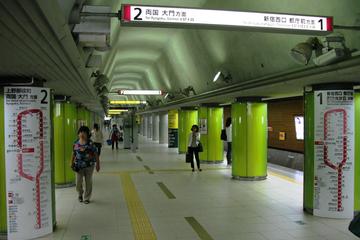 Tokyo Metro
Tokyo Metro Japan as a whole and Tokyo in particular have train travel down to an art. The Japanese capital has two main subway operators — Tokyo Metropolitan Bureau of Transportation (Toei) and Tokyo Metro — and Tokyo Metro is the largest with nine of the city’s 13 lines. Tokyo Metro also draws t
Tokyo Metro
Tokyo Metro Japan as a whole and Tokyo in particular have train travel down to an art. The Japanese capital has two main subway operators — Tokyo Metropolitan Bureau of Transportation (Toei) and Tokyo Metro — and Tokyo Metro is the largest with nine of the city’s 13 lines. Tokyo Metro also draws t
-
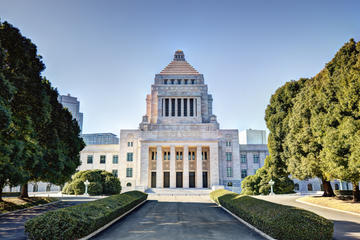 National Diet Building
National Diet Building The National Diet Building is the center of Japanese politics, as it houses both chambers of the Diet, or legislative arm: the House of Representatives, which meets in the left wing, and the House of Councillors, which meets in the right wing. Built in 1936, the building is
National Diet Building
National Diet Building The National Diet Building is the center of Japanese politics, as it houses both chambers of the Diet, or legislative arm: the House of Representatives, which meets in the left wing, and the House of Councillors, which meets in the right wing. Built in 1936, the building is
-
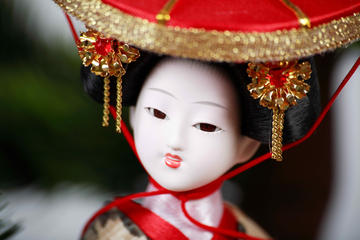 Kyoto Handicraft Center
Kyoto Handicraft Center For handmade goods by local craftsmen in Kyoto, nothing beats the Kyoto Handicraft Center. This three-floor building is jam-packed with handicrafts, as the name implies, and souvenirs. The local cooperative showcases the best work from local artisans and encourages visitors
Kyoto Handicraft Center
Kyoto Handicraft Center For handmade goods by local craftsmen in Kyoto, nothing beats the Kyoto Handicraft Center. This three-floor building is jam-packed with handicrafts, as the name implies, and souvenirs. The local cooperative showcases the best work from local artisans and encourages visitors
-
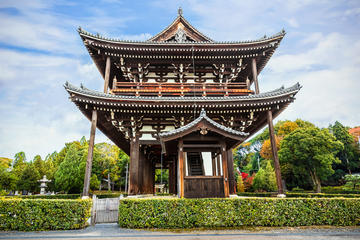 Tofuku-ji Temple
Tofuku-ji Temple Few places on earth are more breathtakingly beautiful than Fall in Tofucku-ji Temple. During cool autumn months travelers and locals make the journey to this Zen temple in southeastern Kyoto that’s known for its incredible colors and brilliant Japanese maples. Visitors climb to th
Tofuku-ji Temple
Tofuku-ji Temple Few places on earth are more breathtakingly beautiful than Fall in Tofucku-ji Temple. During cool autumn months travelers and locals make the journey to this Zen temple in southeastern Kyoto that’s known for its incredible colors and brilliant Japanese maples. Visitors climb to th
-
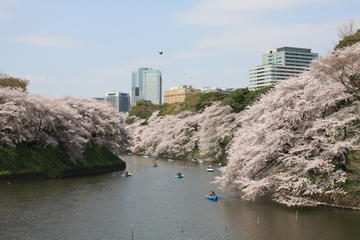 Chidorigafuchi
Chidorigafuchi During springtime, the parks and green spaces in Tokyo and around Japan come to life with colorful pink blossoms. Springtime is cherry blossom season, and for the best viewing in the city, head to Chidorigafuchi. With walkways, bridges, pavilions and boats plying the waters of the s
Chidorigafuchi
Chidorigafuchi During springtime, the parks and green spaces in Tokyo and around Japan come to life with colorful pink blossoms. Springtime is cherry blossom season, and for the best viewing in the city, head to Chidorigafuchi. With walkways, bridges, pavilions and boats plying the waters of the s
-
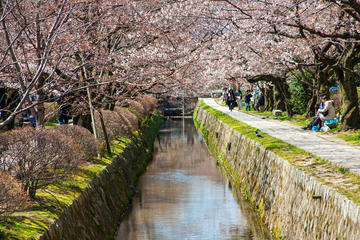 The Philosopher’s Path
The Philosopher’s Path One of Japan’s heralded philosophers is said to have meditated daily as he walked on a stone route alongside a canal on his commute to Kyoto University. The scenic path, shaded by hundreds of cherry trees, quickly became known as The Philosopher’s Path (or The Path of Philos
The Philosopher’s Path
The Philosopher’s Path One of Japan’s heralded philosophers is said to have meditated daily as he walked on a stone route alongside a canal on his commute to Kyoto University. The scenic path, shaded by hundreds of cherry trees, quickly became known as The Philosopher’s Path (or The Path of Philos
-
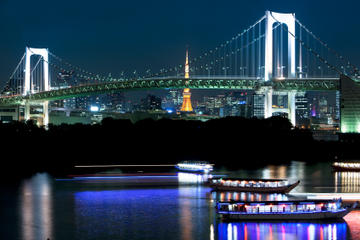 Rainbow Bridge
Rainbow Bridge Tokyo’s Rainbow Bridge, a suspension bridge spanning Tokyo Bay to connect Shibaura Wharf and the Odaiba waterfront area, is one of the city’s most recognizable landmarks, particularly at night. The bridge was completed in 1993 and was painted all in white to help it better blend in
Rainbow Bridge
Rainbow Bridge Tokyo’s Rainbow Bridge, a suspension bridge spanning Tokyo Bay to connect Shibaura Wharf and the Odaiba waterfront area, is one of the city’s most recognizable landmarks, particularly at night. The bridge was completed in 1993 and was painted all in white to help it better blend in
-
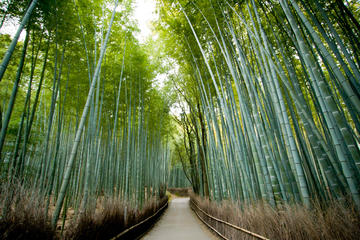 Sagano
Sagano Often mistaken for the Arashiyama district of Kyoto, Sagano expands north of the Togetsukyo Bridge in Kyoto. The tranquil area encompasses some of Kyoto’s most stunning landscapes. With rural residential areas, mountains dotting the horizon, fields ablaze with color and a famous bamboo fore
Sagano
Sagano Often mistaken for the Arashiyama district of Kyoto, Sagano expands north of the Togetsukyo Bridge in Kyoto. The tranquil area encompasses some of Kyoto’s most stunning landscapes. With rural residential areas, mountains dotting the horizon, fields ablaze with color and a famous bamboo fore
-
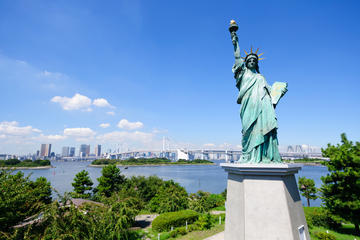 Odaiba Kaihin Koen (Odaiba Seaside Park)
Odaiba Kaihin Koen (Odaiba Seaside Park) Odaiba is a chain of man-made islands inside of the Tokyo Bay. With dazzling views of Mt Fuji, the Rainbow Bridge, and the bay, it is surrounded by Tokyos beauty. A shopping and entertainment center known for its futuristic architecture and theme parks, Oda
Odaiba Kaihin Koen (Odaiba Seaside Park)
Odaiba Kaihin Koen (Odaiba Seaside Park) Odaiba is a chain of man-made islands inside of the Tokyo Bay. With dazzling views of Mt Fuji, the Rainbow Bridge, and the bay, it is surrounded by Tokyos beauty. A shopping and entertainment center known for its futuristic architecture and theme parks, Oda
-
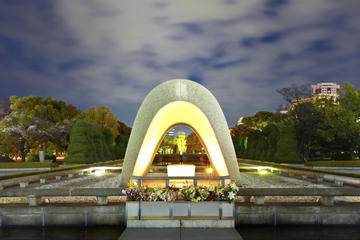 Hiroshima Peace Memorial
Hiroshima Peace Memorial Also called Genbaku Dome, this landmark was the only building left standing after the Enola Gay dropped an atom bomb on Hiroshima on Aug. 6, 1945, eventually killing 140,000 people. Genbaku is the Japanese word for atomic bomb.Originally built in 1910 as the Hiroshima Comm
Hiroshima Peace Memorial
Hiroshima Peace Memorial Also called Genbaku Dome, this landmark was the only building left standing after the Enola Gay dropped an atom bomb on Hiroshima on Aug. 6, 1945, eventually killing 140,000 people. Genbaku is the Japanese word for atomic bomb.Originally built in 1910 as the Hiroshima Comm
-
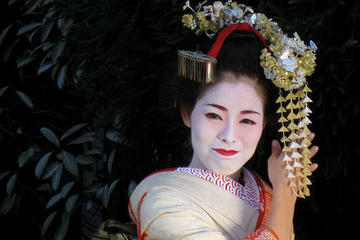 Gion Corner
Gion Corner The refined traditional arts of Japan are highlighted for visitors at Gion Corner, an entertaining and informative nightspot. From tea ceremony to the twang of the Koto, Ikebana floral arranging to puppet plays, Gion Corner dramatizes and explains the ins and outs of the esoteric world
Gion Corner
Gion Corner The refined traditional arts of Japan are highlighted for visitors at Gion Corner, an entertaining and informative nightspot. From tea ceremony to the twang of the Koto, Ikebana floral arranging to puppet plays, Gion Corner dramatizes and explains the ins and outs of the esoteric world
-
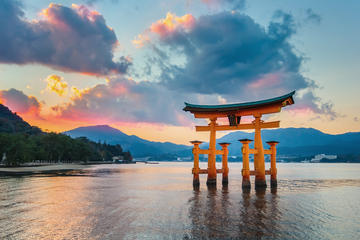 Miyajima Island
Miyajima Island UNESCO-listed Miyajima Island sits within the Seto Inland Sea just outside of Hiroshima. The gem of an island has earned a reputation as one of Japan’s top tourist spots due in large part to the large red shrine gate, called torii in Japanese, that rises from the water just off the
Miyajima Island
Miyajima Island UNESCO-listed Miyajima Island sits within the Seto Inland Sea just outside of Hiroshima. The gem of an island has earned a reputation as one of Japan’s top tourist spots due in large part to the large red shrine gate, called torii in Japanese, that rises from the water just off the
-
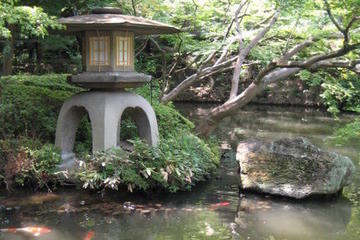 Happo-en Garden
Happo-en Garden Happo-en means beautiful from every angle. When visiting the Happo-en Garden in Tokyo, you’ll see that the name doesn’t even begin to describe this Japanese garden and teahouse. Take a stroll through tree-lined paths of century old bonsai, cherry, and maple trees. Take in the lush
Happo-en Garden
Happo-en Garden Happo-en means beautiful from every angle. When visiting the Happo-en Garden in Tokyo, you’ll see that the name doesn’t even begin to describe this Japanese garden and teahouse. Take a stroll through tree-lined paths of century old bonsai, cherry, and maple trees. Take in the lush
-
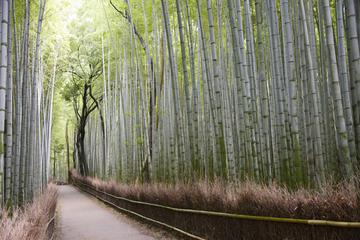 Tenryu-ji Temple
Tenryu-ji Temple Ranked number one of Kyotos five great temples, Tenryu-ji celebrates a history dating back to 1339 and stands in dedication and memory to an ancient emperor. Many of the temple buildings have been destroyed over the centuries, but the temples landscape garden remains much the same
Tenryu-ji Temple
Tenryu-ji Temple Ranked number one of Kyotos five great temples, Tenryu-ji celebrates a history dating back to 1339 and stands in dedication and memory to an ancient emperor. Many of the temple buildings have been destroyed over the centuries, but the temples landscape garden remains much the same
-
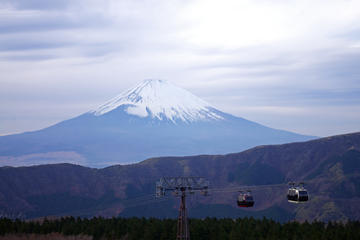 Komagatake Ropeway
Komagatake Ropeway See the so-called Nagano Alps from Japans highest aerial tramway, the Komogatake Ropeway. The Ropeway opened in 1963 and is a popular way to take in one of the most stunning, scenic views in Japan. The Ropeway runs from the edge of Lake Ashi to the summit of Mount Komagatake, it
Komagatake Ropeway
Komagatake Ropeway See the so-called Nagano Alps from Japans highest aerial tramway, the Komogatake Ropeway. The Ropeway opened in 1963 and is a popular way to take in one of the most stunning, scenic views in Japan. The Ropeway runs from the edge of Lake Ashi to the summit of Mount Komagatake, it
-
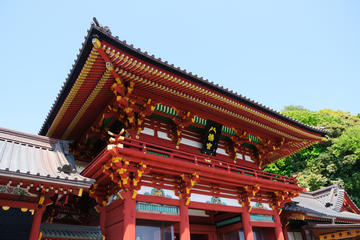 Shrine of Tsurugaoka Hachimangu
Shrine of Tsurugaoka Hachimangu Kamakura makes for a colorful and cultural day trip from Tokyo. The small city has over 75 temples and shrines, the biggest and most famous of which is the Shrine of Tsuragoaka Hachimangu.The shrine was founded by Minamoto Yoriyoshi in 1063. Despite being a sh
Shrine of Tsurugaoka Hachimangu
Shrine of Tsurugaoka Hachimangu Kamakura makes for a colorful and cultural day trip from Tokyo. The small city has over 75 temples and shrines, the biggest and most famous of which is the Shrine of Tsuragoaka Hachimangu.The shrine was founded by Minamoto Yoriyoshi in 1063. Despite being a sh
-
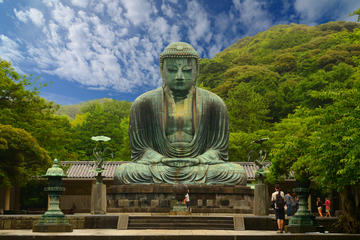 Kotokuin (Great Buddha of Kamakura)
Kotokuin (Great Buddha of Kamakura) The 47-foot (14-meter) tall bronze Buddha statue of Kotokuin (Great Buddha of Kamakura) is only the second tallest statue of Buddha in Japan though likely the most recognizable. The seated figure is that of Amitabha Buddha, worshipped by Japanese Buddhists as a
Kotokuin (Great Buddha of Kamakura)
Kotokuin (Great Buddha of Kamakura) The 47-foot (14-meter) tall bronze Buddha statue of Kotokuin (Great Buddha of Kamakura) is only the second tallest statue of Buddha in Japan though likely the most recognizable. The seated figure is that of Amitabha Buddha, worshipped by Japanese Buddhists as a
-
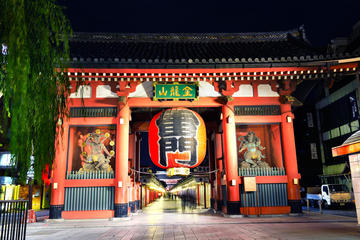 Thunder Gate (Kaminarimon)
Thunder Gate (Kaminarimon) The symbol of the Asakusa neighborhood in Tokyo, Japan, the impressive, large, red Kaminarimon, or Thunder Gate, gives visitors a grand welcome to Senso-ji Temple (Asakusa Temple). Standing 38 feet tall (11.7 meters), Thunder Gate gets its powerful name from Raijin, the
Thunder Gate (Kaminarimon)
Thunder Gate (Kaminarimon) The symbol of the Asakusa neighborhood in Tokyo, Japan, the impressive, large, red Kaminarimon, or Thunder Gate, gives visitors a grand welcome to Senso-ji Temple (Asakusa Temple). Standing 38 feet tall (11.7 meters), Thunder Gate gets its powerful name from Raijin, the
-
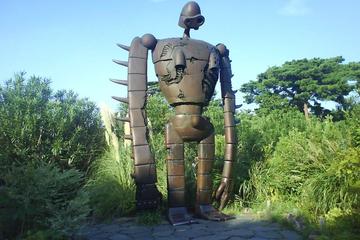 Studio Ghibli Museum
Studio Ghibli Museum The Studio Ghibli Museum houses art and animation from the world-class Hayao Miyazakis Studio Ghibli, which produced the films Spirited Away, Princess Mononoke, and Howl’s Moving Castle. With stand-out architecture, wonderful film showings, and great exhibits with stunning ani
Studio Ghibli Museum
Studio Ghibli Museum The Studio Ghibli Museum houses art and animation from the world-class Hayao Miyazakis Studio Ghibli, which produced the films Spirited Away, Princess Mononoke, and Howl’s Moving Castle. With stand-out architecture, wonderful film showings, and great exhibits with stunning ani
-
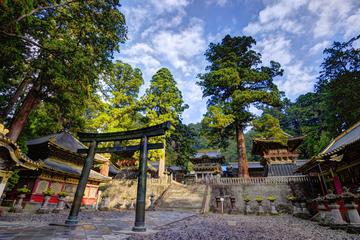 Toshogu Shrine
Toshogu Shrine Built in 1617 to deify Ieyasu Tokugawa, founder of the Tokugawa Shogunate - the family that ruled Japan for over 250 years until 1868, the Toshogu Shrine differentiates itself from other Shinto Shrines with a wide palette of colors and lavish decorations. An impressive amount of gol
Toshogu Shrine
Toshogu Shrine Built in 1617 to deify Ieyasu Tokugawa, founder of the Tokugawa Shogunate - the family that ruled Japan for over 250 years until 1868, the Toshogu Shrine differentiates itself from other Shinto Shrines with a wide palette of colors and lavish decorations. An impressive amount of gol
Total
1725 -travel
FirstPage PreviousPage NextPage LastPage CurrentPage:
10/87 20-travel/Page GoTo Page:
 Tokyo Metro
Tokyo Metro Japan as a whole and Tokyo in particular have train travel down to an art. The Japanese capital has two main subway operators — Tokyo Metropolitan Bureau of Transportation (Toei) and Tokyo Metro — and Tokyo Metro is the largest with nine of the city’s 13 lines. Tokyo Metro also draws t
Tokyo Metro
Tokyo Metro Japan as a whole and Tokyo in particular have train travel down to an art. The Japanese capital has two main subway operators — Tokyo Metropolitan Bureau of Transportation (Toei) and Tokyo Metro — and Tokyo Metro is the largest with nine of the city’s 13 lines. Tokyo Metro also draws t
 National Diet Building
National Diet Building The National Diet Building is the center of Japanese politics, as it houses both chambers of the Diet, or legislative arm: the House of Representatives, which meets in the left wing, and the House of Councillors, which meets in the right wing. Built in 1936, the building is
National Diet Building
National Diet Building The National Diet Building is the center of Japanese politics, as it houses both chambers of the Diet, or legislative arm: the House of Representatives, which meets in the left wing, and the House of Councillors, which meets in the right wing. Built in 1936, the building is
 Kyoto Handicraft Center
Kyoto Handicraft Center For handmade goods by local craftsmen in Kyoto, nothing beats the Kyoto Handicraft Center. This three-floor building is jam-packed with handicrafts, as the name implies, and souvenirs. The local cooperative showcases the best work from local artisans and encourages visitors
Kyoto Handicraft Center
Kyoto Handicraft Center For handmade goods by local craftsmen in Kyoto, nothing beats the Kyoto Handicraft Center. This three-floor building is jam-packed with handicrafts, as the name implies, and souvenirs. The local cooperative showcases the best work from local artisans and encourages visitors
 Tofuku-ji Temple
Tofuku-ji Temple Few places on earth are more breathtakingly beautiful than Fall in Tofucku-ji Temple. During cool autumn months travelers and locals make the journey to this Zen temple in southeastern Kyoto that’s known for its incredible colors and brilliant Japanese maples. Visitors climb to th
Tofuku-ji Temple
Tofuku-ji Temple Few places on earth are more breathtakingly beautiful than Fall in Tofucku-ji Temple. During cool autumn months travelers and locals make the journey to this Zen temple in southeastern Kyoto that’s known for its incredible colors and brilliant Japanese maples. Visitors climb to th
 Chidorigafuchi
Chidorigafuchi During springtime, the parks and green spaces in Tokyo and around Japan come to life with colorful pink blossoms. Springtime is cherry blossom season, and for the best viewing in the city, head to Chidorigafuchi. With walkways, bridges, pavilions and boats plying the waters of the s
Chidorigafuchi
Chidorigafuchi During springtime, the parks and green spaces in Tokyo and around Japan come to life with colorful pink blossoms. Springtime is cherry blossom season, and for the best viewing in the city, head to Chidorigafuchi. With walkways, bridges, pavilions and boats plying the waters of the s
 The Philosopher’s Path
The Philosopher’s Path One of Japan’s heralded philosophers is said to have meditated daily as he walked on a stone route alongside a canal on his commute to Kyoto University. The scenic path, shaded by hundreds of cherry trees, quickly became known as The Philosopher’s Path (or The Path of Philos
The Philosopher’s Path
The Philosopher’s Path One of Japan’s heralded philosophers is said to have meditated daily as he walked on a stone route alongside a canal on his commute to Kyoto University. The scenic path, shaded by hundreds of cherry trees, quickly became known as The Philosopher’s Path (or The Path of Philos
 Rainbow Bridge
Rainbow Bridge Tokyo’s Rainbow Bridge, a suspension bridge spanning Tokyo Bay to connect Shibaura Wharf and the Odaiba waterfront area, is one of the city’s most recognizable landmarks, particularly at night. The bridge was completed in 1993 and was painted all in white to help it better blend in
Rainbow Bridge
Rainbow Bridge Tokyo’s Rainbow Bridge, a suspension bridge spanning Tokyo Bay to connect Shibaura Wharf and the Odaiba waterfront area, is one of the city’s most recognizable landmarks, particularly at night. The bridge was completed in 1993 and was painted all in white to help it better blend in
 Sagano
Sagano Often mistaken for the Arashiyama district of Kyoto, Sagano expands north of the Togetsukyo Bridge in Kyoto. The tranquil area encompasses some of Kyoto’s most stunning landscapes. With rural residential areas, mountains dotting the horizon, fields ablaze with color and a famous bamboo fore
Sagano
Sagano Often mistaken for the Arashiyama district of Kyoto, Sagano expands north of the Togetsukyo Bridge in Kyoto. The tranquil area encompasses some of Kyoto’s most stunning landscapes. With rural residential areas, mountains dotting the horizon, fields ablaze with color and a famous bamboo fore
 Odaiba Kaihin Koen (Odaiba Seaside Park)
Odaiba Kaihin Koen (Odaiba Seaside Park) Odaiba is a chain of man-made islands inside of the Tokyo Bay. With dazzling views of Mt Fuji, the Rainbow Bridge, and the bay, it is surrounded by Tokyos beauty. A shopping and entertainment center known for its futuristic architecture and theme parks, Oda
Odaiba Kaihin Koen (Odaiba Seaside Park)
Odaiba Kaihin Koen (Odaiba Seaside Park) Odaiba is a chain of man-made islands inside of the Tokyo Bay. With dazzling views of Mt Fuji, the Rainbow Bridge, and the bay, it is surrounded by Tokyos beauty. A shopping and entertainment center known for its futuristic architecture and theme parks, Oda
 Hiroshima Peace Memorial
Hiroshima Peace Memorial Also called Genbaku Dome, this landmark was the only building left standing after the Enola Gay dropped an atom bomb on Hiroshima on Aug. 6, 1945, eventually killing 140,000 people. Genbaku is the Japanese word for atomic bomb.Originally built in 1910 as the Hiroshima Comm
Hiroshima Peace Memorial
Hiroshima Peace Memorial Also called Genbaku Dome, this landmark was the only building left standing after the Enola Gay dropped an atom bomb on Hiroshima on Aug. 6, 1945, eventually killing 140,000 people. Genbaku is the Japanese word for atomic bomb.Originally built in 1910 as the Hiroshima Comm
 Gion Corner
Gion Corner The refined traditional arts of Japan are highlighted for visitors at Gion Corner, an entertaining and informative nightspot. From tea ceremony to the twang of the Koto, Ikebana floral arranging to puppet plays, Gion Corner dramatizes and explains the ins and outs of the esoteric world
Gion Corner
Gion Corner The refined traditional arts of Japan are highlighted for visitors at Gion Corner, an entertaining and informative nightspot. From tea ceremony to the twang of the Koto, Ikebana floral arranging to puppet plays, Gion Corner dramatizes and explains the ins and outs of the esoteric world
 Miyajima Island
Miyajima Island UNESCO-listed Miyajima Island sits within the Seto Inland Sea just outside of Hiroshima. The gem of an island has earned a reputation as one of Japan’s top tourist spots due in large part to the large red shrine gate, called torii in Japanese, that rises from the water just off the
Miyajima Island
Miyajima Island UNESCO-listed Miyajima Island sits within the Seto Inland Sea just outside of Hiroshima. The gem of an island has earned a reputation as one of Japan’s top tourist spots due in large part to the large red shrine gate, called torii in Japanese, that rises from the water just off the
 Happo-en Garden
Happo-en Garden Happo-en means beautiful from every angle. When visiting the Happo-en Garden in Tokyo, you’ll see that the name doesn’t even begin to describe this Japanese garden and teahouse. Take a stroll through tree-lined paths of century old bonsai, cherry, and maple trees. Take in the lush
Happo-en Garden
Happo-en Garden Happo-en means beautiful from every angle. When visiting the Happo-en Garden in Tokyo, you’ll see that the name doesn’t even begin to describe this Japanese garden and teahouse. Take a stroll through tree-lined paths of century old bonsai, cherry, and maple trees. Take in the lush
 Tenryu-ji Temple
Tenryu-ji Temple Ranked number one of Kyotos five great temples, Tenryu-ji celebrates a history dating back to 1339 and stands in dedication and memory to an ancient emperor. Many of the temple buildings have been destroyed over the centuries, but the temples landscape garden remains much the same
Tenryu-ji Temple
Tenryu-ji Temple Ranked number one of Kyotos five great temples, Tenryu-ji celebrates a history dating back to 1339 and stands in dedication and memory to an ancient emperor. Many of the temple buildings have been destroyed over the centuries, but the temples landscape garden remains much the same
 Komagatake Ropeway
Komagatake Ropeway See the so-called Nagano Alps from Japans highest aerial tramway, the Komogatake Ropeway. The Ropeway opened in 1963 and is a popular way to take in one of the most stunning, scenic views in Japan. The Ropeway runs from the edge of Lake Ashi to the summit of Mount Komagatake, it
Komagatake Ropeway
Komagatake Ropeway See the so-called Nagano Alps from Japans highest aerial tramway, the Komogatake Ropeway. The Ropeway opened in 1963 and is a popular way to take in one of the most stunning, scenic views in Japan. The Ropeway runs from the edge of Lake Ashi to the summit of Mount Komagatake, it
 Shrine of Tsurugaoka Hachimangu
Shrine of Tsurugaoka Hachimangu Kamakura makes for a colorful and cultural day trip from Tokyo. The small city has over 75 temples and shrines, the biggest and most famous of which is the Shrine of Tsuragoaka Hachimangu.The shrine was founded by Minamoto Yoriyoshi in 1063. Despite being a sh
Shrine of Tsurugaoka Hachimangu
Shrine of Tsurugaoka Hachimangu Kamakura makes for a colorful and cultural day trip from Tokyo. The small city has over 75 temples and shrines, the biggest and most famous of which is the Shrine of Tsuragoaka Hachimangu.The shrine was founded by Minamoto Yoriyoshi in 1063. Despite being a sh
 Kotokuin (Great Buddha of Kamakura)
Kotokuin (Great Buddha of Kamakura) The 47-foot (14-meter) tall bronze Buddha statue of Kotokuin (Great Buddha of Kamakura) is only the second tallest statue of Buddha in Japan though likely the most recognizable. The seated figure is that of Amitabha Buddha, worshipped by Japanese Buddhists as a
Kotokuin (Great Buddha of Kamakura)
Kotokuin (Great Buddha of Kamakura) The 47-foot (14-meter) tall bronze Buddha statue of Kotokuin (Great Buddha of Kamakura) is only the second tallest statue of Buddha in Japan though likely the most recognizable. The seated figure is that of Amitabha Buddha, worshipped by Japanese Buddhists as a
 Thunder Gate (Kaminarimon)
Thunder Gate (Kaminarimon) The symbol of the Asakusa neighborhood in Tokyo, Japan, the impressive, large, red Kaminarimon, or Thunder Gate, gives visitors a grand welcome to Senso-ji Temple (Asakusa Temple). Standing 38 feet tall (11.7 meters), Thunder Gate gets its powerful name from Raijin, the
Thunder Gate (Kaminarimon)
Thunder Gate (Kaminarimon) The symbol of the Asakusa neighborhood in Tokyo, Japan, the impressive, large, red Kaminarimon, or Thunder Gate, gives visitors a grand welcome to Senso-ji Temple (Asakusa Temple). Standing 38 feet tall (11.7 meters), Thunder Gate gets its powerful name from Raijin, the
 Studio Ghibli Museum
Studio Ghibli Museum The Studio Ghibli Museum houses art and animation from the world-class Hayao Miyazakis Studio Ghibli, which produced the films Spirited Away, Princess Mononoke, and Howl’s Moving Castle. With stand-out architecture, wonderful film showings, and great exhibits with stunning ani
Studio Ghibli Museum
Studio Ghibli Museum The Studio Ghibli Museum houses art and animation from the world-class Hayao Miyazakis Studio Ghibli, which produced the films Spirited Away, Princess Mononoke, and Howl’s Moving Castle. With stand-out architecture, wonderful film showings, and great exhibits with stunning ani
 Toshogu Shrine
Toshogu Shrine Built in 1617 to deify Ieyasu Tokugawa, founder of the Tokugawa Shogunate - the family that ruled Japan for over 250 years until 1868, the Toshogu Shrine differentiates itself from other Shinto Shrines with a wide palette of colors and lavish decorations. An impressive amount of gol
Toshogu Shrine
Toshogu Shrine Built in 1617 to deify Ieyasu Tokugawa, founder of the Tokugawa Shogunate - the family that ruled Japan for over 250 years until 1868, the Toshogu Shrine differentiates itself from other Shinto Shrines with a wide palette of colors and lavish decorations. An impressive amount of gol